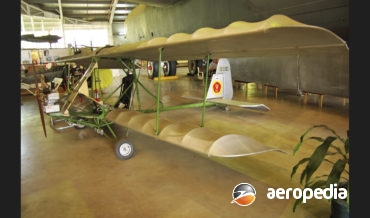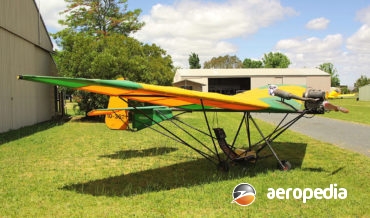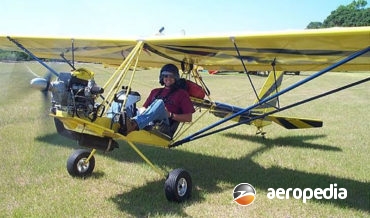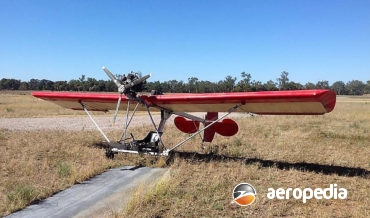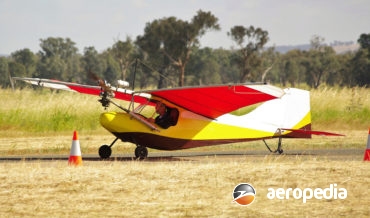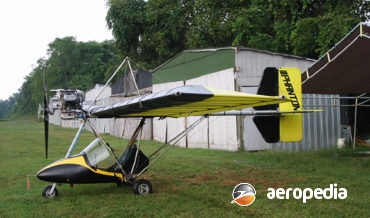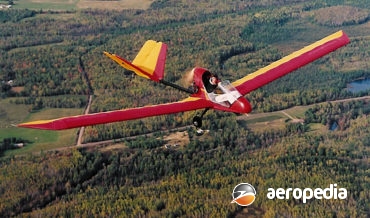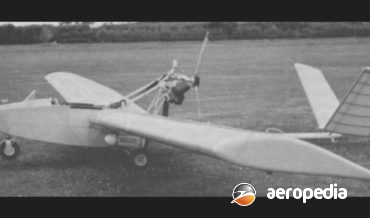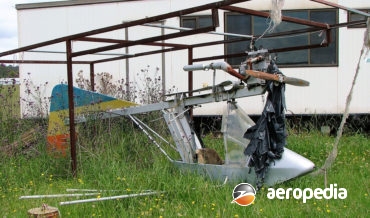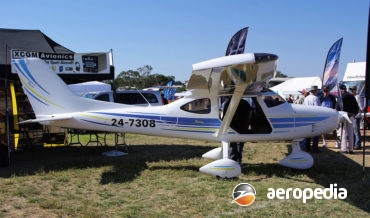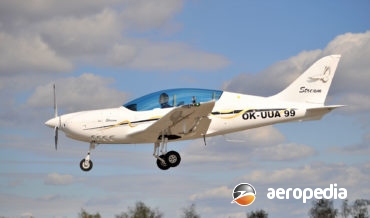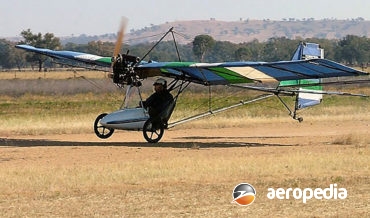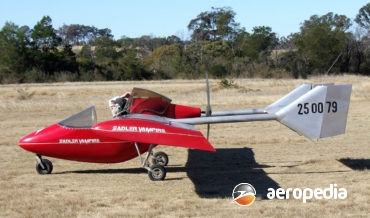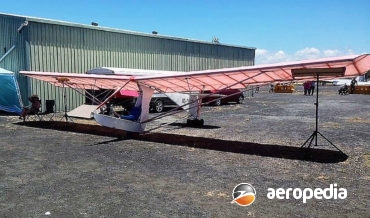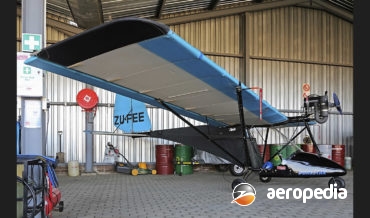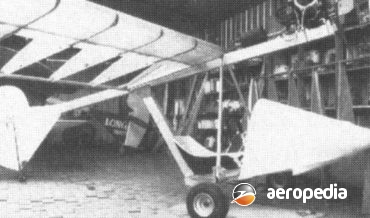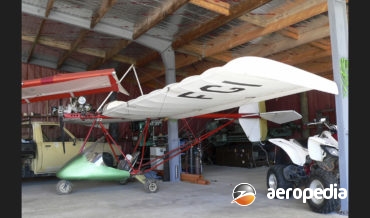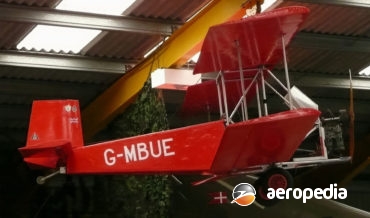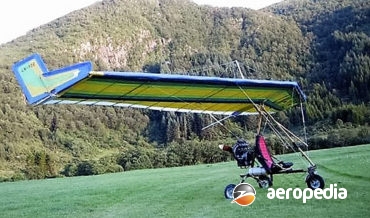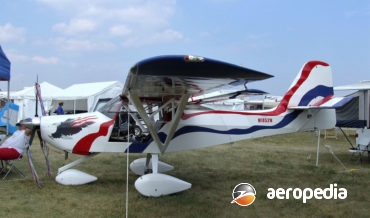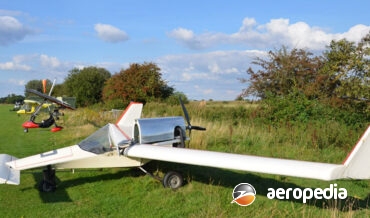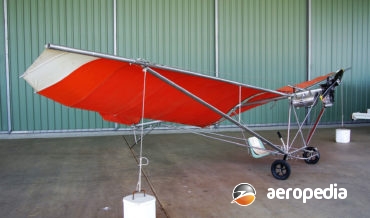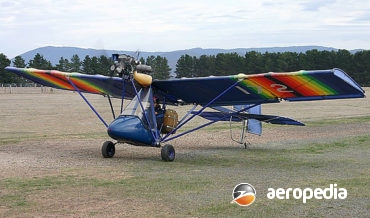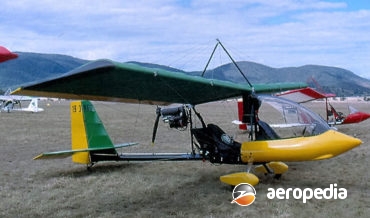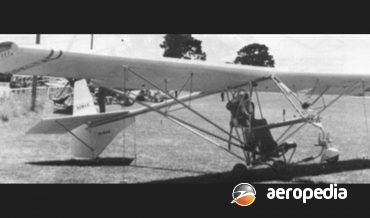All Contents
Contents
The Delta Bird is one of a series of ultralight aircraft designed by Robert Hovey in 1982. It is a single-seat single-engine biplane with conventional three-axis control.
David C. Eyre
- August 24, 2019
The Weedhopper was a high-wing ultralight aircraft fitted with an engine in the tractor configuration, a tricycle undercarriage, and with two-axis control. It was initially developed by John Chota in the late 1970s during the boom in ultralight aircraft and was introduced to the market in 1977.
David C. Eyre
- May 17, 2019
The Javelin was introduced to the ultralight market in 1999 and was intended to appeal to pilots interested in having an open cockpit.
David C. Eyre
- May 17, 2019
The Jackaroo was one of many designs produced by the late Colin Winton and produced by Winton Aircraft in Queensland and is a single-seat high-wing open-cockpit aircraft, being first made available to pilots in about 1980.
David C. Eyre
- May 8, 2019
The Jillaroo was one of a series of ultra-light aircraft designed by the late Colin Winton, others including the Brumby, Jackaroo, Sportsman and Grasshopper and they had a variety of engines including examples from the Rotax series, Hirth, Zenoah and Fuji Robin.
David C. Eyre
- May 8, 2019
The Viva Scout Mk 1 was a single-seat ultralight aircraft of two-axis configuration (pitch and yaw) powered by a Pixie Major engine driving a wooden propeller through a single chain.
David C. Eyre
- May 8, 2019
The Mirage was designed by Francis Riley and produced in the United States as an ultralight aircraft to meet US FAR 103 Ultralight Vehicle regulations and was produced in large numbers.
David C. Eyre
- May 8, 2019
The Phantom was one of a series of single-engine, single-seat ultralight aircraft designed and developed in a range of models by Phantom Aeronautics of Three Rivers, Michigan and it was made available to the amateur construction market in kit form.
David C. Eyre
- May 8, 2019
The Cloud Dancer was designed by Messrs Erwin Rodger and Roger Delura as a single-seat self-launched glider for the US market and marketed by UYS Aviation.
David C. Eyre
- May 8, 2019
The Invader was one of a number of aircraft introduced to the ultralight market in the early 1980s.
David C. Eyre
- May 8, 2019
These ultralights were two variants of the one design produced by Ultralight Aircraft Industries Pty Ltd of Goolwa, SA.
David C. Eyre
- May 8, 2019
The Thruster Glasshouse was one of the many ultralight designs from Steven Cohen and was produced by Thruster Aircraft commencing in 1984.
David C. Eyre
- May 8, 2019
The TL-300 Sirius is one of a number of light aircraft produced in the Czech Republic to LSA standards, first being completed in early 2009, having at that time completed flight testing and certification.
David C. Eyre
- May 8, 2019
The TL Ultralight Stream is one of a series of light sport aircraft produced in the Czech Republic by TL-Ultralight of Hradec Kralove and is a two seat in tandem light sport aircraft for private use.
David C. Eyre
- May 8, 2019
The construction of the prototype of the P-96 Golf series commenced in July 1996, the first flight being made in March 1997.
David C. Eyre
- May 8, 2019
The Tecnam 2002 series was introduced to the Company’s line in 2004, being described as designed and built in the 21st Century, this is the standard all GA trainers should attain.
David C. Eyre
- May 8, 2019
The Alpin is one of a series of gliders produced in the Czech Republic by TeST, this company being formed in 1992 with the aim of designing and producing ultralight gliders, ultralight motor gliders, and ultralight aircraft and to this end the company has been very successful.
David C. Eyre
- May 8, 2019
The Rotec Rally 2 was designed and marketed by Rotec Engineering from about 1980 to 1985. It was a single-seat ultra-light produced in some numbers in the 1980s and had a tubular aluminium framework with a single wing and a pusher engine, it being bolted together and was covered in
David C. Eyre
- May 8, 2019
The B1-RD was a single-seat ultralight or minimum aircraft with a framework built of 60661 T6 aircraft grade aluminium.
David C. Eyre
- May 8, 2019
The Sunbird was a single-seat low-wing monoplane designed and built by Mr Kevin Sedgman .
David C. Eyre
- May 8, 2019
The Sadler Vampire was a single-seat ultra-light aircraft designed by Bill Sadler and built in the United States, 28 aircraft being built there before a downturn in the fortunes of the industry led to production ceasing.
David C. Eyre
- May 8, 2019
The Goat series of ultralight basic gliders was designed by Michael Sandlin in the United States, it being a parasol wing, single-seat glider for which Mr Sandlin produced technical drawings for construction by amateur builders.
David C. Eyre
- May 8, 2019
The Dual Star was a two-seat development of the Pioneer Flightstar which, in the mid 1980s, was marketed in Australia by Nason Industries of Melbourne
David C. Eyre
- May 8, 2019
The Sabre 1K-1R was a high-wing strut-braced ultra-light aircraft with an open cockpit marketed by Pour le Merite Ultralights of Nagambie, VIC in the 1980s and was designed to meet ANO 95.10.
David C. Eyre
- May 8, 2019
Pterodactyl in the United States produced a number of ultralight aircraft for the sports aircraft market and these included the Ptraveller, the Pfledge and the Ascender II.
David C. Eyre
- May 8, 2019
The Double Eagle was designed by Leonard Milholland in the United States as a basic ultra-light aircraft and is a two-seat plans-built development of the Legal Eagle.
David C. Eyre
- May 8, 2019
The B-10 commenced life as a hang glider and was developed into a powered ultralight aircraft with good soaring characteristics.
David C. Eyre
- May 8, 2019
The Mitchell Wing U-2 was an ultralight design which was basically a flying wing with a small single-seat cockpit, a bubble canopy and a pusher engine and, designed by Donald Mitchell, was developed initially in 1980 as an experimental category motor glider.
David C. Eyre
- May 8, 2019
In the early 1980s Mr Maxwell Clear, a New Zealander, travelled to the United States to look for a microlight aircraft to purchase but could not find anything he considered suitable so on returning to New Zealand he formed a group with ten other like-minded aviators and decided to build
David C. Eyre
- May 8, 2019
Known as the Flying Flea, this series of aircraft was designed by Henri Mignet, the first model built in any numbers being the HM-14 (which see) and was followed by a whole range of variations.
David C. Eyre
- May 8, 2019
With the growth of the ultralight movement in the 1980s a number of people around the world commenced to design and build various forms of ultralight aircraft but many suffered from the lack of a suitable engine.
David C. Eyre
- May 8, 2019
The Foxbat was one of a number of designs by William Armour which for some years was produced by Manta Products Inc of Oakland California.
David C. Eyre
- May 8, 2019
This aircraft stemmed in 1998 from a series of light aircraft designed by Dan Denney. The Lite was an ultralight trainer aimed as the US Sports Pilot Program. It has been produced in kit form and is available in tricycle undercarriage configuration.
David C. Eyre
- May 8, 2019
The Goldwing was a single-seat, single-engined mid-wing monoplane with conventional three-axis control introduced to the ultralight market in 1979 and designed by Craig Catto and Brian Glenn and marketed by Goldwing Ltd in the United States.
David C. Eyre
- May 8, 2019
The Jeep was a single-seat high-wing braced monoplane built to Australian standard ANO95/10 with an enclosed cockpit and a pusher engine designed and produced in small numbers by Leigh Wakeland in the 1980s
David C. Eyre
- May 8, 2019
The Javelin was a single-seat ultralight sporting aircraft marketed in Australia by Flight 95 of Lindfield NSW in the mid-1980s and had a single-surface with Dacron covered high-wing, this being a strut-braced monoplane and which itself was a development of the company’s Mustang
David C. Eyre
- May 8, 2019
Spectrum Aviation was formed at Lismore, NSW in 1989 as an ultralight maintenance, flight training and sail manufacturing facility
David C. Eyre
- May 8, 2019
In the early 1980s Delta Technology in the United States produced a number of ultralight aircraft of high-wing configuration with conventional tail surfaces on a monoplane wing, the ailerons and elevators being operated by a control stick, the rudder being operated by pedals.
David C. Eyre
- May 8, 2019
The Swift started lift as a lightweight foot-launched tailless glider with rigid wings and was designed in California in the United States but has been manufactured by Aeriane, a Company based at Gembloux in Belgium and was initially built under licence but later the Belgian concern became the sole manufacturer.
David C. Eyre
- May 8, 2019
Recent Comments
Archives
Categories
- No categories
Categories
- No categories
Latest Posts
Newsletter

